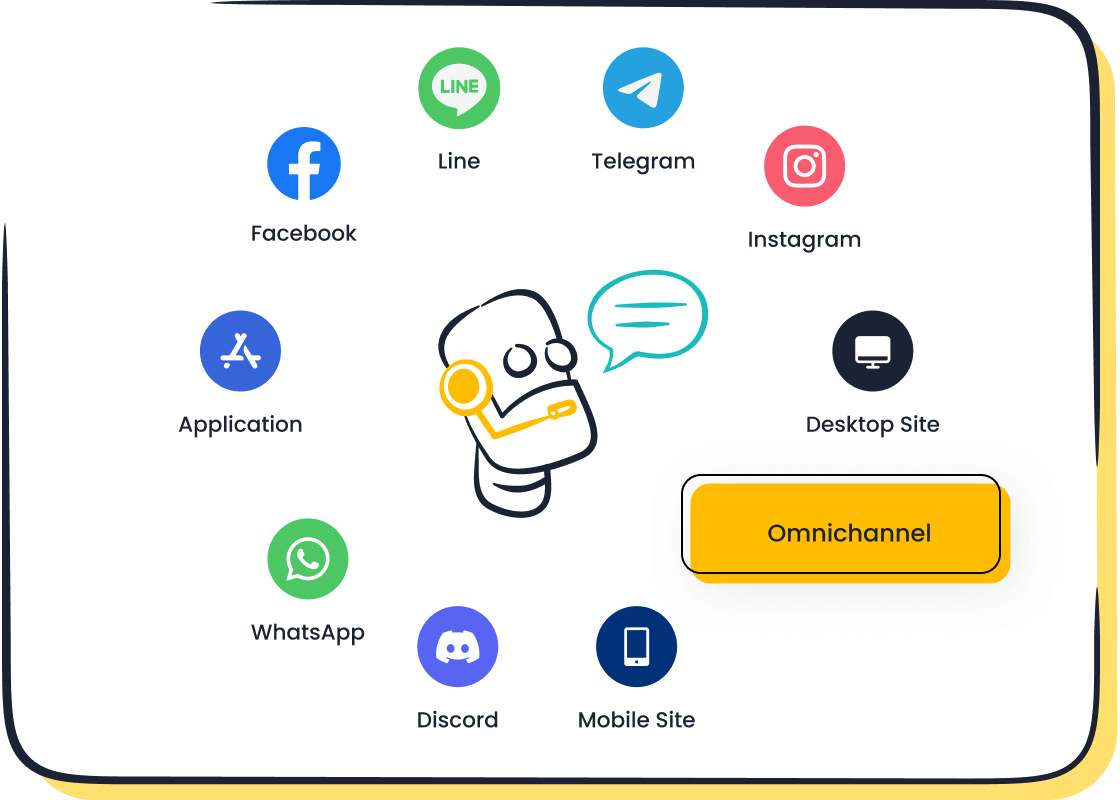Why Net Promoter Score Matters for Business Growth

Net Promoter Score (NPS) plays a pivotal role in driving business growth by strengthening customer loyalty and increasing revenue. Satisfied customers often become promoters, recommending your brand and boosting sales. Research shows that a 10-point rise in NPS can lead to a 3.2% increase in upsell revenue. High NPS also correlates with brand loyalty, as promoters are 4.2 times more likely to renew subscriptions. By identifying customer satisfaction levels, NPS helps you address pain points and foster long-term success. Sobot offers innovative tools, like its AI-powered chatbot, to enhance customer interactions and improve NPS results.
What is Net Promoter Score (NPS)?
Definition and Importance of NPS
Overview of NPS as a customer loyalty metric
Net Promoter Score (NPS) is a simple yet powerful metric that measures customer loyalty. It asks customers a single question: "How likely are you to recommend us to others?" Responses range from 0 (not likely) to 10 (extremely likely). This score helps you understand how customers perceive your brand. A high NPS indicates strong loyalty, which often leads to repeat business and referrals. Businesses with loyal customers typically experience faster growth and higher revenue.
NPS stands out because of its simplicity and predictive power. It’s easy to implement and provides actionable insights into customer satisfaction. By tracking NPS trends, you can evaluate the effectiveness of your customer relationship strategies. For example, companies with high NPS often outperform competitors in customer retention and sales growth.
Why measuring NPS is essential for understanding customer satisfaction
Measuring NPS is crucial for identifying how satisfied your customers are. It highlights areas where your business excels and pinpoints pain points that need attention. Regular NPS surveys allow you to monitor changes in customer sentiment over time. This helps you adapt your strategies to meet evolving customer needs.

NPS surveys are also cost-effective. They can be integrated into your regular customer interactions without requiring significant resources. For instance, Sobot’s AI-powered chatbot can automate NPS surveys, making it easier to collect and analyze feedback. This approach not only saves time but also ensures you gather valuable insights to improve customer satisfaction.
How NPS is Calculated
The NPS question: "How likely are you to recommend us?"
The foundation of NPS lies in a single, straightforward question: "How likely are you to recommend us to a friend or colleague?" Customers rate their likelihood on a scale from 0 to 10. This question captures their overall sentiment toward your brand.
Categories of customers: Promoters, Passives, and Detractors
Based on their responses, customers fall into three categories:
- Promoters (9-10): These are your most loyal customers. They actively recommend your brand and drive growth through referrals.
- Passives (7-8): These customers are satisfied but not enthusiastic. They are unlikely to promote your brand and may switch to competitors.
- Detractors (0-6): These customers are dissatisfied. They can harm your brand’s reputation through negative word-of-mouth.
Understanding these categories helps you tailor your strategies to enhance loyalty and reduce churn.
Formula for calculating NPS: % Promoters - % Detractors
To calculate NPS, follow these steps:
- Count the number of Promoters and Detractors.
- Calculate their respective percentages.
- Subtract the percentage of Detractors from the percentage of Promoters.
For example, if 60% of your customers are Promoters and 20% are Detractors, your NPS would be 40. This score provides a clear snapshot of your customer loyalty. Tracking this metric over time helps you measure the impact of your efforts to improve customer satisfaction.
Why Net Promoter Score is Crucial for Business Growth
Predicting Revenue and Growth
How high NPS correlates with repeat purchases and referrals
A high NPS reflects strong customer loyalty, which directly impacts your business growth. Promoters, your most loyal customers, are more likely to make repeat purchases and recommend your brand to others. This creates a ripple effect, bringing in new customers without additional marketing costs. Studies show that high NPS companies often experience lower churn rates and higher Customer Lifetime Value (CLV). The table below highlights key findings:
| Evidence Source | Key Findings |
|---|---|
| Chartexpo Blog | High NPS scores correlate with higher CLV and increased repeat purchases. Promoters reduce churn rates and drive word-of-mouth referrals. |
| Springer Article | Reichheld's study found strong correlations between aggregated NPS values and three-year sales growth across multiple firms. |
These insights demonstrate how satisfied customers can fuel your future growth potential by increasing revenue and expanding your customer base.
The impact of customer loyalty on revenue growth
Customer loyalty plays a critical role in driving revenue growth. Promoters not only spend more but also influence others to try your products or services. For example, businesses with high NPS often see a 20% increase in referral-driven sales. Loyal customers also cost less to retain compared to acquiring new ones. By focusing on improving NPS, you can unlock the potential for sustained revenue growth and long-term success.
Benchmarking and Competitive Advantage
Using NPS to compare performance within your industry
NPS allows you to benchmark your performance against competitors in your industry. By comparing your score to industry averages, you can identify where you stand and uncover opportunities for improvement. High NPS companies often outperform their peers in customer retention and satisfaction. This makes NPS a valuable tool for assessing your competitive position and setting goals for business growth.
Identifying areas for improvement to stay ahead of competitors
Analyzing your NPS results helps you pinpoint areas that need attention. For instance, if your detractor percentage is high, you can investigate common complaints and address them proactively. This approach not only improves customer satisfaction but also strengthens your competitive edge. Tools like Sobot’s AI-powered chatbot can help you gather and analyze NPS data efficiently, enabling you to stay ahead in a competitive market.
Insights into Customer Loyalty Drivers
Understanding what makes customers loyal
Understanding the drivers of customer loyalty is essential for improving your NPS. Factors like product quality, excellent service, and seamless communication often influence loyalty. Promoters value consistent experiences and personalized interactions. By identifying these drivers, you can tailor your strategies to meet customer expectations and foster loyalty.
Addressing pain points to enhance satisfaction and retention

Addressing customer pain points is crucial for enhancing satisfaction and retention. For example, if customers frequently mention slow response times, implementing a solution like Sobot’s chatbot can resolve this issue. The chatbot operates 24/7, providing instant answers and improving efficiency. By resolving pain points, you can turn detractors into promoters and boost your NPS impact on revenue.
How to Use NPS to Drive Business Growth
Leveraging Promoters for Advocacy
Encouraging promoters to recommend your brand
Promoters are your most valuable customers. They actively share their positive experiences, driving customer advocacy and acquisition. To encourage them, you must make it easy for them to recommend your brand. For example, provide shareable content like testimonials or case studies. A satisfied customer who shares their story can inspire others to try your products. Recognize and reward promoters for their loyalty. A simple thank-you email or exclusive perks can strengthen their connection to your brand. Studies show that 83% of satisfied customers are willing to refer a company, but only 29% actually do. By actively engaging promoters, you can unlock the full potential of positive word-of-mouth.
Creating referral programs to amplify word-of-mouth marketing
Referral programs are a proven way to amplify customer advocacy. Offer incentives like discounts, gift cards, or loyalty points for successful referrals. This motivates promoters to recommend your brand to friends and family. For instance, Dropbox grew its user base by 60% through a referral program that rewarded both the referrer and the referee. Tools like Sobot’s chatbot can help automate referral tracking and communication, ensuring a seamless experience for your customers. A well-designed referral program not only boosts acquisition but also strengthens your relationship with promoters.
Addressing Detractors to Reduce Churn
Identifying and resolving customer pain points
Detractors often highlight areas where your business needs improvement. Use NPS as a customer feedback tool to identify their pain points. For example, if detractors frequently mention slow response times, you can implement solutions like Sobot’s AI-powered chatbot. This tool operates 24/7, providing instant answers and reducing frustration. Addressing these issues promptly shows detractors that you value their feedback. This approach not only improves satisfaction but also reduces churn.
Turning detractors into loyal customers through proactive engagement
Proactive engagement can transform detractors into loyal customers. Reach out to them directly to understand their concerns. Offer personalized solutions or compensation, such as discounts or free trials, to rebuild trust. For example, a financial services company reduced churn by 15% by proactively addressing complaints from detractors. By resolving issues and exceeding expectations, you can turn negative experiences into opportunities for growth.
Enhancing Customer Experience with Sobot's Chatbot
Using AI-powered tools like Sobot's Chatbot to improve customer interactions

AI-powered tools like Sobot’s chatbot can revolutionize your customer experience. The chatbot provides instant, accurate responses across multiple channels, ensuring consistent communication. For example, Opay, a financial service platform, used Sobot’s chatbot to handle high volumes of inquiries, achieving a 90% customer satisfaction rate. By integrating such tools, you can enhance customer interactions and improve your NPS results.
Automating responses to common queries to boost satisfaction and efficiency
Automating responses to common queries saves time for both your customers and your team. Sobot’s chatbot operates 24/7, resolving routine issues without human intervention. This improves efficiency by 70% and reduces costs by up to 50%. Customers appreciate quick resolutions, which boosts satisfaction and loyalty. Automation ensures you meet customer expectations while maintaining operational efficiency.
Limitations of NPS and How to Overcome Them
Lack of Context in NPS Scores
Collecting qualitative feedback alongside NPS
While the net promoter score (NPS) provides a clear snapshot of customer loyalty, it often lacks the context needed to understand why customers feel the way they do. To bridge this gap, you should collect qualitative feedback alongside NPS surveys. Open-ended questions like “What influenced your score?” can reveal valuable insights.
Qualitative feedback helps you identify common themes in customer responses. For example:
- It highlights specific pain points or areas of excellence.
- It uncovers recurring issues that detractors face.
- It provides actionable insights to improve customer satisfaction.
By combining NPS with qualitative data, you can better understand customer needs and prioritize areas for improvement.
Using follow-up questions to understand customer responses
Follow-up questions are essential for gaining deeper insights into customer feedback. After customers rate your business, ask targeted questions to explore their experiences. For instance, if a detractor mentions slow service, you can ask, “What specific delays did you encounter?” This approach helps you pinpoint the root causes of dissatisfaction.
Using tools like Sobot’s chatbot, you can automate follow-up surveys and analyze responses efficiently. This ensures you gather meaningful data to enhance your strategies.
Overemphasis on a Single Metric
Combining NPS with other customer satisfaction metrics
Relying solely on NPS can lead to an incomplete view of customer satisfaction. To get a holistic picture, combine NPS with other metrics like Customer Effort Score (CES) or Customer Satisfaction Score (CSAT). For example, while NPS measures loyalty, CES evaluates how easy it is for customers to resolve issues. Together, these metrics provide a comprehensive understanding of your performance.
Low NPS companies often overlook this approach, missing opportunities to address critical gaps. By integrating multiple metrics, you can identify areas for improvement and create a balanced strategy.
Integrating NPS into a broader customer experience strategy

NPS should not exist in isolation. Instead, integrate it into your overall customer experience strategy. Use NPS data to inform decisions about product development, marketing, and support. For example, if promoters praise your fast response times, invest in tools like Sobot’s chatbot to maintain this advantage.
Low NPS companies often fail to act on feedback, leading to stagnant growth. By aligning NPS insights with your broader goals, you can drive meaningful improvements.
Potential Bias in Responses
Ensuring a representative sample of customers
Bias in NPS responses can skew your results. To avoid this, ensure your survey reaches a diverse and representative sample of customers. Include both frequent buyers and occasional users. This approach provides a balanced view of customer sentiment.
For example, if you only survey promoters, your NPS will appear inflated. A representative sample ensures your data reflects the true state of customer satisfaction.
Avoiding leading questions in surveys
Leading questions can influence customer feedback and distort your NPS results. Instead, use neutral language to encourage honest responses. For instance, avoid asking, “How satisfied are you with our excellent service?” Instead, ask, “How would you rate your experience with us?”
Neutral questions help you gather accurate data, enabling you to address genuine concerns. Tools like Sobot’s chatbot can standardize survey language, ensuring consistency across all interactions.
Key Takeaways for Businesses
The Role of NPS in Long-Term Success
How NPS fosters customer loyalty and retention
NPS helps you build long-term customer relationships by identifying loyal customers and addressing areas of dissatisfaction. Promoters, who score 9 or 10 on the NPS scale, are more likely to stay with your brand and recommend it to others. This loyalty reduces churn and increases repeat purchases. For example, businesses with high NPS often see a 20% increase in customer retention rates.
By focusing on improving NPS, you can create a cycle of loyalty and growth. Tools like Sobot’s AI-powered chatbot can enhance customer interactions, ensuring faster responses and higher satisfaction. These improvements foster trust and strengthen customer loyalty, which is essential for long-term success.
Its impact on building a strong brand reputation
A high NPS directly impacts your brand reputation. Promoters actively share positive experiences, boosting your credibility. According to Bain & Company, companies with high NPS grow twice as fast as their competitors due to strong word-of-mouth marketing.
Negative feedback from detractors also provides opportunities to improve. By acting on the results of NPS surveys, you can address pain points and demonstrate your commitment to customer satisfaction. This proactive approach enhances your reputation and builds trust with your audience.
Steps to Start Using NPS Effectively
Implementing NPS surveys in customer interactions
To start using NPS, integrate surveys into your customer interactions. Ask the standard NPS question—“How likely are you to recommend us?”—at key touchpoints like post-purchase or after customer support interactions.
Automation tools like Sobot’s chatbot simplify this process. The chatbot can send surveys, collect responses, and analyze data in real-time. This efficiency ensures you gather actionable insights without disrupting your operations. Regularly conducting surveys helps you track progress and adapt to changing customer needs.
Acting on feedback to drive continuous improvement
Collecting NPS data is only the first step. You must act on the results to make meaningful changes. Analyze feedback to identify trends and address recurring issues. For example, if customers mention slow response times, consider implementing AI tools like Sobot’s chatbot to improve efficiency.
Continuous improvement based on NPS feedback strengthens customer loyalty and enhances your brand reputation. By showing customers that their opinions matter, you build trust and foster long-term customer relationships.
Net Promoter Score (NPS) is a vital tool for understanding and improving customer loyalty. It helps you identify promoters who drive growth through referrals and detractors who highlight areas needing attention. Businesses with high NPS often see increased revenue and stronger customer relationships. For example, Chartexpo reports that promoters are more likely to repurchase and refer others, while detractors can harm your brand through negative word-of-mouth.
NPS also enables you to benchmark performance and enhance customer experiences. Tools like Sobot's AI-powered Chatbot simplify collecting and acting on NPS feedback. By automating responses and resolving issues quickly, you can improve satisfaction and retention. Leverage NPS insights to fuel sustainable growth and build a loyal customer base.
FAQ
What is a good Net Promoter Score (NPS)?
A good NPS varies by industry, but scores above 50 are generally considered excellent. For example, the financial services sector averages around 34, while tech companies often exceed 60. Tools like Sobot’s chatbot can help you achieve higher scores by improving customer satisfaction and loyalty.
How often should you measure NPS?
You should measure NPS quarterly or after key customer interactions, such as purchases or support calls. Regular tracking helps you monitor trends and adapt strategies. Sobot’s AI-powered chatbot can automate surveys, ensuring consistent feedback collection without disrupting your operations.
Can NPS predict business growth?
Yes, NPS strongly correlates with growth. Companies with high NPS often see increased referrals, repeat purchases, and lower churn rates. For instance, a 10-point rise in NPS can boost upsell revenue by 3.2%. Sobot’s solutions help you act on NPS insights to drive sustainable growth.
How does Sobot’s chatbot improve NPS?
Sobot’s chatbot enhances customer experiences by providing instant, accurate responses 24/7. It resolves common queries autonomously, improving efficiency by 70% and reducing costs by 50%. These benefits lead to higher satisfaction, turning detractors into promoters and boosting your NPS.
Why is NPS better than other metrics?
NPS focuses on customer loyalty, which directly impacts revenue and growth. Unlike other metrics, it predicts future behavior, such as referrals and repeat purchases. Combining NPS with tools like Sobot’s chatbot ensures a comprehensive approach to improving customer satisfaction and loyalty.
See Also
Continuous Live Chat Assistance Enhances Business Growth
Comparative Analysis of Leading Customer Feedback Tools
Enhancing Call Center Efficiency Through Effective Monitoring